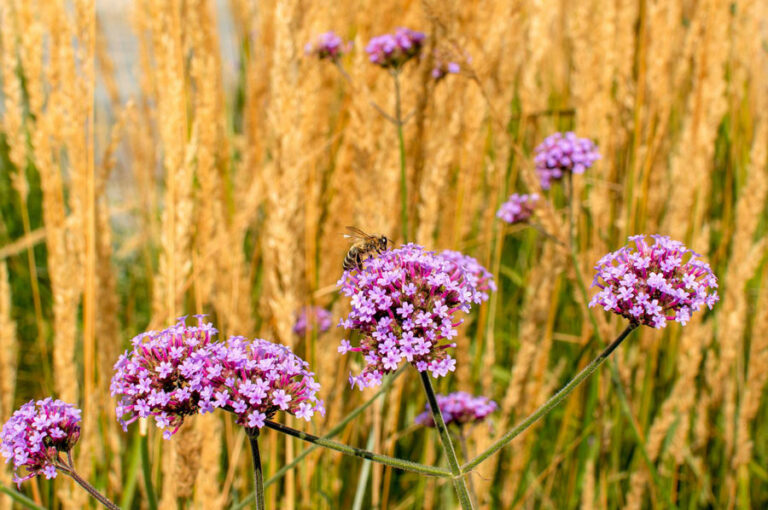Even on an overcast November day, the garden can be bathed in light. But it doesn’t need to come from the sky: plants can provide a golden glow that looks as warm as sunshine.
The stars of the autumn garden are not only spectacular leaves, turning shades of crimson, orange and yellow before they fall from deciduous trees, but ornamental grasses that send spirits soaring. They quietly grow in stature throughout the summer, then burst forth in full glory during autumn and winter, filling borders with joy once most other plants have faded. Grasses soften the understorey in a cloud of luxuriant waves. These are plants to excite and stimulate the senses. The sound of rustling in the autumn breeze cuts through the stillness in the air, evoking memories of the turning tide and of passing time.
The secret of successful planting lies in repeating forms and patterns throughout the space. One or two specimen grasses are certainly worth having, but it’s not until you repeat the theme across the garden that you create an unforgettable sea of beauty.
Top tips for using ornamental grasses in the garden
• Aim for contrast. Think about the backdrop against which your grasses will be seen. An evergreen yew hedge, for example, will make your golden autumn grasses look brighter and bolder than a background of mixed deciduous shrubs. A black wall or fence will provide a similar effect.
• Place taller grasses at the back of the border, such as Miscanthus sinensis ‘Ferner Osten’ (Chinese silver grass), which can reach heights of 1.5m, and mounded forms of slightly lower grasses in the middle. Miscanthus sinensis ‘Kleine Silberspinne’ (another variation of Chinese silver grass) is a particularly easy grass to grow and it changes colour as winter progresses. Pennisetum alopecuroides ‘Hameln’ (fountain grass) is a rather beautiful smaller grass, and the evergreen or semi-evergreen Anemanthele lessoniana (pheasant’s tail grass) looks magnificent when placed towards the front of the border, spilling slender foliage and airy flowerheads onto paths.
• Plant most grasses in multiples of odd numbers, if possible. It creates a balanced composition that feels harmonious.
•Consider incorporating structural elements amongst grasses to provide an anchor. Topiary such as tall cones of evergreens, pillars of hornbeam (Carpinus betulus), cloud-pruned trees or multi-stemmed trees can look highly effective.
• Don’t expect all grasses to stay where you put them! Some tend to seed themselves around and the parent plant might eventually fade away. Aim for an informal look that allows this natural transition to take place.
• Research your grasses so that you know how to care for them. Deciduous grasses should be cut down to the ground in very early spring or late winter. Evergreen and semi-evergreen grasses generally need a comb through with a gloved hand in order to remove dead stems. The harder-leafed evergreens sometimes benefit from a very light pruning, just removing damaged stems.
The majority of grasses like free-draining soils in full or partial sun. There are some, however, than can cope with even dry shade, including Carex ‘Ice Dance’.
By Caroline Knight


